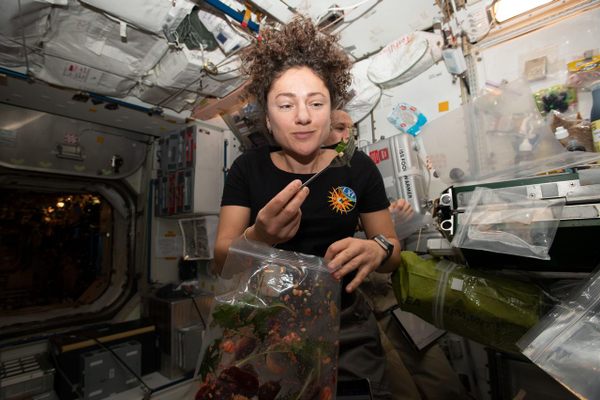Born of Maverick Rocketeers: A Tour of NASA’s Jet Propulsion Laboratory (PART 1 OF 2)
California has always figured prominently in the American endeavors of space exploration. Out of ten NASA Centers nationwide, the Golden State is home to a record three. Perhaps the most intriguing of these sites is the Jet Propulsion Laboratory (or JPL) in La Cañada Flintridge, a little over ten miles north of downtown Los Angeles. With a history dating back to the mid-1930s, JPL is older than NASA itself.
.jpg)
An aerial view of NASA’s Jet Propulsion Laboratory in Los Angeles County. (source)
It began, more or less, as a group of curious students from the California Institute of Technology who needed space to carry out their risky rocket experiments. Having been deemed a safety threat on campus, the young rocket scientists were asked to conduct their research elsewhere. So, they found a relatively isolated site along the drying Arroyo Seco riverbed, nestled in the foothills of the San Gabriel Mountains.

The “Rocket Boys,” seen in 1936, were instrumental in JPL’s founding. Seated left to right are Rudolph Schott, Apollo Milton Olin Smith, Frank Malina, Ed Forman and Jack Parsons. (source)
Today, JPL is still in the same location, but it has evolved from a small group of maverick rocketeers to a Federally Funded Research & Development Center (FFRDC) operated by Caltech under a contract from NASA and employing over 5,000 workers. For some, government-funded science sometimes brings to mind top-secret experiments that take place behind closed doors, but the operations at JPL are actually quite transparent. Each week they open their facilities to visitors in order to share the lab’s long list of airborne achievements.
The work performed at JPL makes their public tour near the top of Atlas Obscura’s list for curious Angelinos and California-bound travelers. And if you’ve ever found yourself wondering about the origin of those robotic rovers and satellites that spend their time and a (fairly) small percent of the taxpayer’s money studying other worlds, then JPL holds the keys to your curiosity.

The Control Room at JPL where, scientists transmit and receive messages to rovers and satellites exploring other worlds via a global network of radio antennae: the Deep Space Network. (Image by Trevor David, All Rights Reserved.)
Everything from the Explorer 1 (the first U.S. satellite, and the first instrument to send back measurements from space) to the Wide Field and Planetary Camera (the high-tech camera which saved the Hubble Space Telescope from certain failure and NASA from a public relations nightmare) were built at JPL. Voyager 1, currently the farthest man-made object from Earth, even began its journey in Los Angeles. Equipped with a Golden Record designed to summarize humanity in a way that might be decipherable to other intelligent beings, the satellite from the 1970s has left our solar system for good…
…What’s that you say? You were hoping for details about these interstellar ventures? Fear not, loyal Obscuraphile. Part Two of this installment catalogues some of the awesomeness regularly taking place at JPL. Tune in Monday, September 6th for more intergalactic ingenuity!









Follow us on Twitter to get the latest on the world's hidden wonders.
Like us on Facebook to get the latest on the world's hidden wonders.
Follow us on Twitter Like us on Facebook